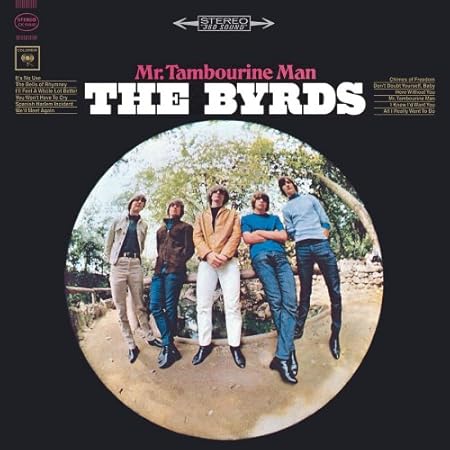
How High Did the Byrds Fly?
Business Jet Traveler » October 2015
“The Beatles had a hit at the time named ‘Eight Days a Week,’ so we decided ‘eight miles’ sounded better.” (Illustration: John T. Lewis)
Friday, October 2, 2015
Turns out the group were just six miles up when three of their members wrote their 1966 hit “Eight Miles High.” Here’s why the song title lifted them higher.
Quite a few years back, I was writing an article for a BJT sister publication on how airspace is organized. I recall musing about how altitude “layers” were assigned by aircraft types in the early days of flying. Small personal aircraft usually stayed below 12,000 feet; larger turboprop commuter liners dominated the “teens”; airliners tended to operate between 21,000 and 33,000 feet; and hot-rod business jets worked the heady altitudes above that, as high as 51,000 feet. My point was that all that categorization had since become obsolete, as aircraft of all types had grown more versatile over time.
Because I’m a 1960s-music fan, this retro-vision on airspace also got me thinking about the Byrds’ 1966 hit “Eight Miles High.” Most listeners assumed they were winkingly referring to drugs, at least as a double meaning, and I’ve no doubt that’s at least partially correct. But I did some arithmetic and wondered whether songwriters Gene Clark, David Crosby and Roger McGuinn were also subtly referring to a business jet ride. Eight miles high is 42,240 feet—definitely above airliners of the time and up where the early Lear Jet 23s flew.
I decided to investigate, using a then-fresh innovation called the Internet. Lo and behold, the Byrds had a website, but it contained no reference to the meaning behind the song title, other than disclaimers that it was absolutely not about drugs (wink, wink). Then I saw a little section of the site titled “Send Roger a note.”
OK, why not?
I explained to Roger (or more likely some lackey hired to read all his emails) that I was writing about airspace for a magazine called Aviation International News and I thought “Eight Miles High” would make a fun reference if, indeed, the song was about flying in a business jet—most likely a Lear Jet, which by then dominated the market and had become to bizjets what Kleenex is to facial tissue. (In the ’60s, the aircraft—named for company founder and colorful innovator Bill Lear—was still written as two words. It wasn’t compressed to the current “Learjet” until after subsequent corporate buyouts.)
I didn’t really expect a response from McGuinn, but my note must have appealed to him, maybe because I was not one of the many people asking which drugs the song concerned. He wrote me back, explaining that, no, the words were not about a business jet but were instead penned during one of the band’s airline flights to London.
Yes, he told me, he and his cowriters knew they were actually closer to six miles high. But, McGuinn said, “The Beatles had a hit at the time named ‘Eight Days a Week,’ so we decided ‘eight miles’ sounded better.” (This is paraphrased, but pretty close. I foolishly didn’t save his email.) McGuinn added, however, that he and the band’s other members did have fun memories of flying with Bill Lear’s son John above Southern California in Lear Jets. In fact, they released a song titled “2-4-2 Foxtrot (The Lear Jet Song)” on their Fifth Dimension album.
That track is not among their most imaginative work. It consists of the sounds of engine startup in a Lear Jet 23 with the N-registration number 242F (“F” is “foxtrot” on the radio) and the voice of John Lear conducting the preflight checks over an intercom—with the overdubbed band playing and singing “Go ’n’ ride a Lear Jet, baby, go ’n’ ride a Lear Jet” continuously for two minutes, 12 seconds.
After hearing that record recently and recalling McGuinn’s comments about riding with John Lear, I thought I’d try reaching Lear himself. It turns out he has evolved into one of the nation’s leading conspiracy theorists, and his website (therealjohnlear.com) offers the opportunity to chat with him on the phone…for $2.99 a minute with a five-minute minimum. I’m not in the habit of compensating sources, but I decided to make an exception and pay for a reservation.
He called back precisely at the appointed hour, confirmed that it is his voice in the background of the “Lear Jet Song” and that he did, indeed, regularly take the Byrds flying back in the late 1960s and early 1970s.
And, yes, on those occasions, the group literally did fly “eight miles high.”
Mark Phelps is a private pilot and a managing editor at BJT sister publication Aviation International News.

No comments:
Post a Comment